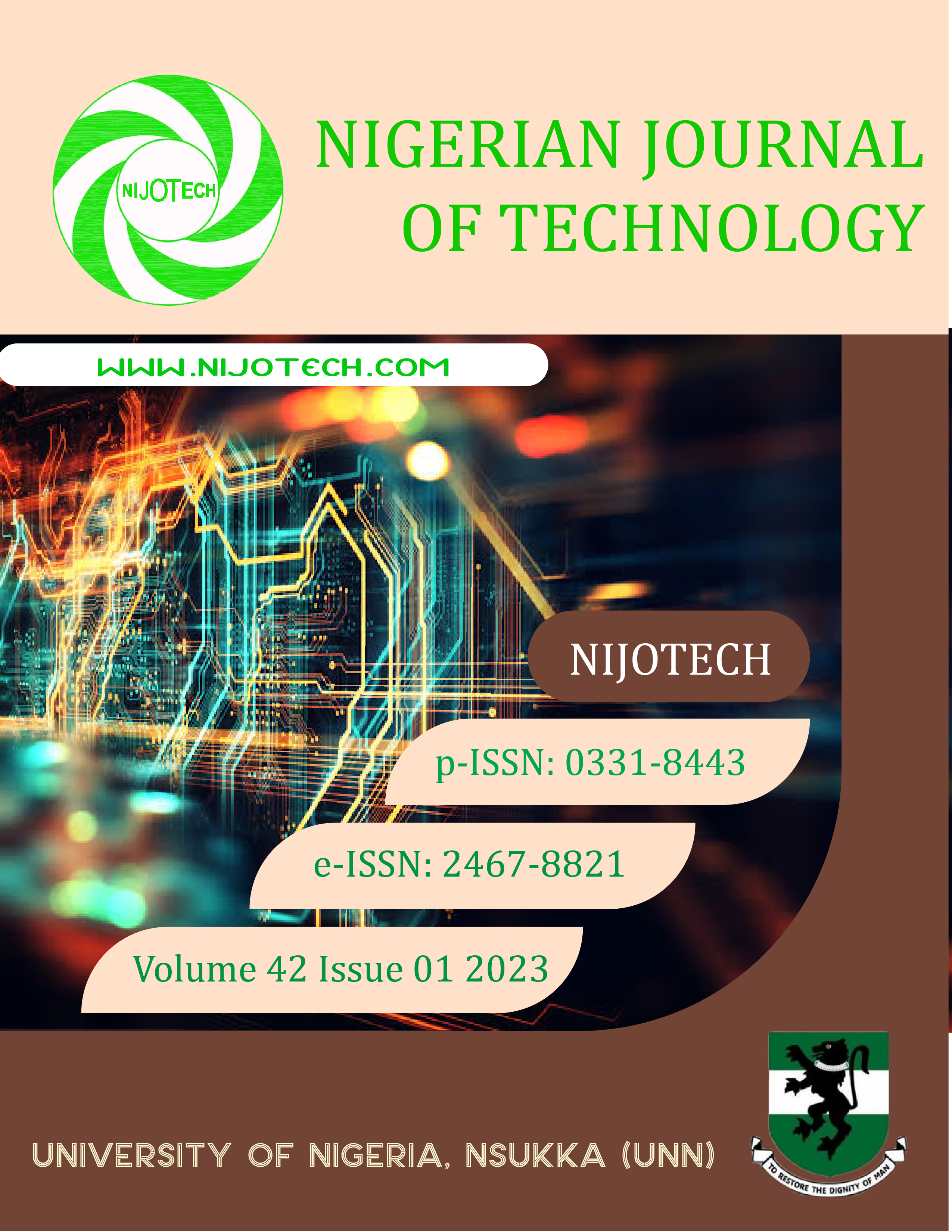EFFECT OF FELDSPAR AND SILICA VARIATION ON THE PROPERTIES OF DENTAL PORCELAIN
DOI:
https://doi.org/10.4314/njt.v42i1.13Keywords:
Dental porcelain, Feldspar, Silica, Bone ash, Kaolin, CharacterisationAbstract
Dental porcelain was produced by mixing feldspar, silica, kaolin and bone ash by varying the contents of feldspar and silica. The processing steps include milling, sieving, pressing/shaping, drying, and sintering while the characterisation techniques were Hardness, Compressive strength, X-ray diffraction, Scanning electron microscopy and Fourier Transform Infrared (FTIR). The mixture was subjected to temperatures of 1100 and 1200 oC in a sintering furnace. The chemical composition was determined using X-ray fluorescence and they confirm that SiO2 and Al2O3 are the two major constituents in feldspar and kaolin while CaO is the major constituent in bone ash. For samples sintered at 1200oC, the X-ray diffraction showed that some glass phase possibly consisting of hedenbergite, ilmenite and silica were formed while crystalline phases namely microcline and sanidine were obtained for samples sintered at 1100°C. The morphology of the grains revealed that samples sintered at 1200oC had some hexagonal silica crystals while flakes of different sizes were obtained for samples sintered at 1100oC. Hardness values between 262 and 536 BHN, compressive modulus values ranging from 219 MPa to 324 MPa and linear shrinkage values between 6.34 and 7.6% were obtained. The batches of different compositions with ranges: quartz (silica) (15-25%), feldspar (70-80%), kaolin (Edda/Bauchi) (4%) and bone ash (1%) were fired at 1100, 1200oC, and the developed properties were tested. The sample with 70 wt.% of feldspar, 25 wt.% silica, 4 wt.% of Bauchi clay, and 1 wt.% bone ash sintered at 1200oC gave the best properties and has the potential to be used in dental restoration.
Downloads
Published
Issue
Section
License
Copyright (c) 2023 Nigerian Journal of Technology

This work is licensed under a Creative Commons Attribution-NonCommercial 4.0 International License.
The contents of the articles are the sole opinion of the author(s) and not of NIJOTECH.
NIJOTECH allows open access for distribution of the published articles in any media so long as whole (not part) of articles are distributed.
A copyright and statement of originality documents will need to be filled out clearly and signed prior to publication of an accepted article. The Copyright form can be downloaded from http://nijotech.com/downloads/COPYRIGHT%20FORM.pdf while the Statement of Originality is in http://nijotech.com/downloads/Statement%20of%20Originality.pdf
For articles that were developed from funded research, a clear acknowledgement of such support should be mentioned in the article with relevant references. Authors are expected to provide complete information on the sponsorship and intellectual property rights of the article together with all exceptions.
It is forbidden to publish the same research report in more than one journal.











